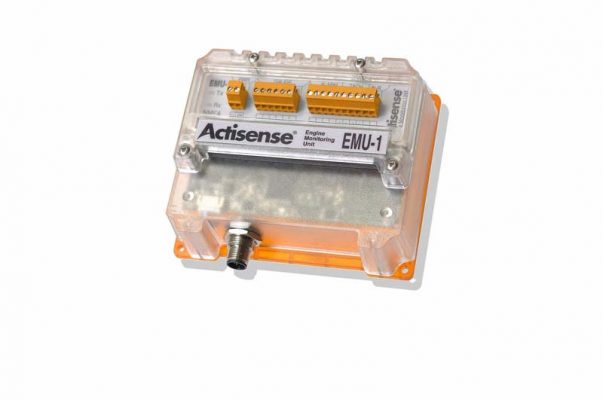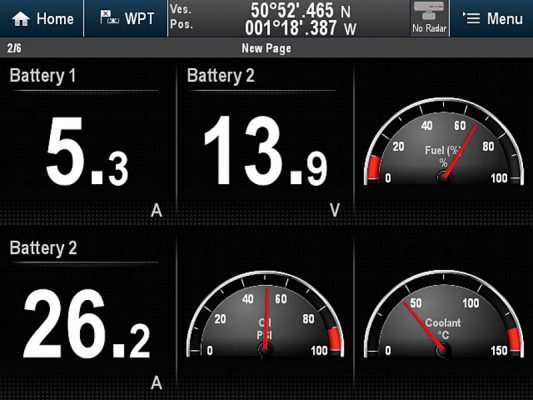Actisense EMU-1 Engine Monitoring Unit
Again, there are six ‘gauge input’ channels, but the main difference is that the Actisense EMU-1 is pre-loaded with a range of sender characteristics (including the non-linearity of temperature senders) which makes the configuration very simple but, of course, inflexible.

You only have to choose the engine instance, then the parameter for each channel, and select your sender from the drop-down list. The EMU-1 then has four alarm inputs which are connected to the switch part of the senders: only two are used in this installation. It is strongly recommended that you retain the original engine electrics alarm connections, but you can also connect them to the EMU-1 alarm inputs as well if desired. Finally, there are two tacho inputs.
Channel allocation
(Instance 0 and current source ‘Auto’ for each)
G1 – Coolant temperature G2 – Oil pressure
G3 – Fuel tank level G4-G6 – Not used
A1 – Oil pressure sender low-pressure switch (set to trigger below 5V)
A2 – Temperature sender over-temperature switch (set to trigger below 5V)
A3 – A4 Not used
T1(+) – Alternator ‘W’ terminal for engine revs. (Ratio PPR = 11.5)
T1(-) – 0V
T2 (+/-) Not used
Battery volts are measured internally from the EMU-1 supply.
EMU configuration tool
This is very straightforward to load, although it is necessary to buy the Actisense NGT-1 USB to use it. The communication between the config software (on your computer) and the EMU-1 is through the NGT-1 USB into the NMEA2000 network backbone. If you have a Raymarine (STNG)-style backbone you will need two DeviceNet (female) to STNG cable adapters for the NGT-1 and EMU-1. Currently, the configuration software does not allow existing engine hours to be entered or allow the overall set-up to be saved, so write it down as you will have to re-enter it all next time.

EMU configuration tool.




